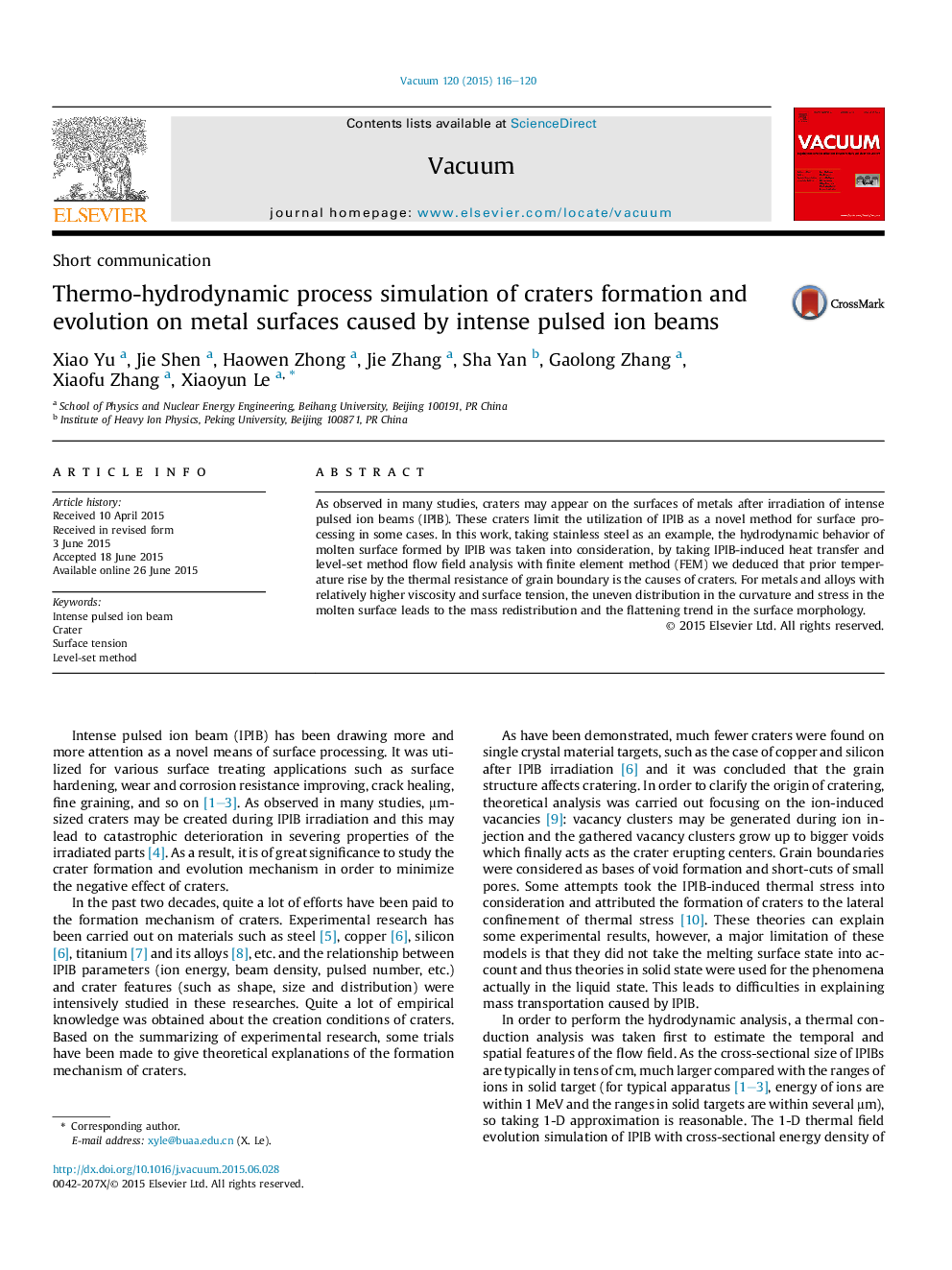| Article ID | Journal | Published Year | Pages | File Type |
|---|---|---|---|---|
| 1689505 | Vacuum | 2015 | 5 Pages |
Abstract
As observed in many studies, craters may appear on the surfaces of metals after irradiation of intense pulsed ion beams (IPIB). These craters limit the utilization of IPIB as a novel method for surface processing in some cases. In this work, taking stainless steel as an example, the hydrodynamic behavior of molten surface formed by IPIB was taken into consideration, by taking IPIB-induced heat transfer and level-set method flow field analysis with finite element method (FEM) we deduced that prior temperature rise by the thermal resistance of grain boundary is the causes of craters. For metals and alloys with relatively higher viscosity and surface tension, the uneven distribution in the curvature and stress in the molten surface leads to the mass redistribution and the flattening trend in the surface morphology.
Related Topics
Physical Sciences and Engineering
Materials Science
Surfaces, Coatings and Films
Authors
Xiao Yu, Jie Shen, Haowen Zhong, Jie Zhang, Sha Yan, Gaolong Zhang, Xiaofu Zhang, Xiaoyun Le,
